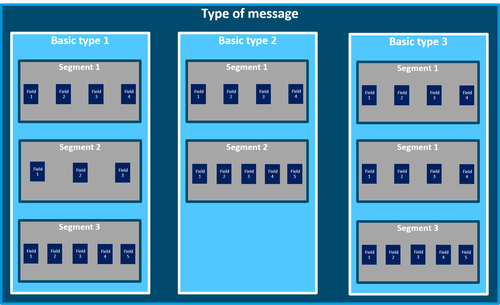Communication via IDocs in the SAP environment
Imagine the following: A car manufacturer runs out of screws, the assembly lines stop and production comes to a halt. Every single minute that passes from now on means loss, because the value-adding production has come to a standstill. With beads of sweat on his forehead, a man picks up the phone and orders a helicopter... with screws.
This example, which at first seems bizarre, is in fact reality and takes place when production in manufacturing plants breaks down. Of course, one might think that it would be unrealistic to call a helicopter because it would be far too expensive. But one must not forget that a stagnant production becomes more expensive every minute and a helicopter for several tens of thousands of euros quickly solves the issue.
A better solution: Preventing the issue
And that's where IDocs come in. IDocs are an EDI standard created by SAP for exchanging information between SAP systems. If you're not familiar with the words "IDoc" and "EDI," I recommend the following following blog article, to get a quick overview. Companies use IDocs to communicate with each other. To stay with our example: The car manufacturer would regularly check his screw inventory and when it reaches a certain level, he would send an order to his supplier, fully automated, via IDocs.
But how exactly is an IDoc defined? An IDoc is a collection of information formatted in a very specific structure. The structure into which the information is organized is called a message type. The message type itself consists of so-called basic types. The basic types group together segments that ultimately contain individual fields.

A message type alone does not make an IDoc ...
... because the information has to be entered into the message type. In reality, the information is entered into a message type and sent via separate programmes. The receiving systems then have corresponding programmes that read the IDoc and specifically post the information. For this to work, however, both sides must know the message type, i.e. they must speak the same language, so to speak. Leading car manufacturers, for example, send their suppliers documents in which their message types are professionally documented so that the suppliers can correctly transfer the message types into their SAP system.
Why IDoc monitoring makes sense for every company
IDocs thus ensure smooth automated communication between SAP systems. When used correctly, they can prevent production stoppages and keep helicopters on the ground. Precisely because IDocs perform such a significant task, they should be monitored accordingly. Tools like Libelle EDIMON offer the possibility to monitor IDocs 24/7 and to react automatically in case of errors.
Recommended article
All blog articles